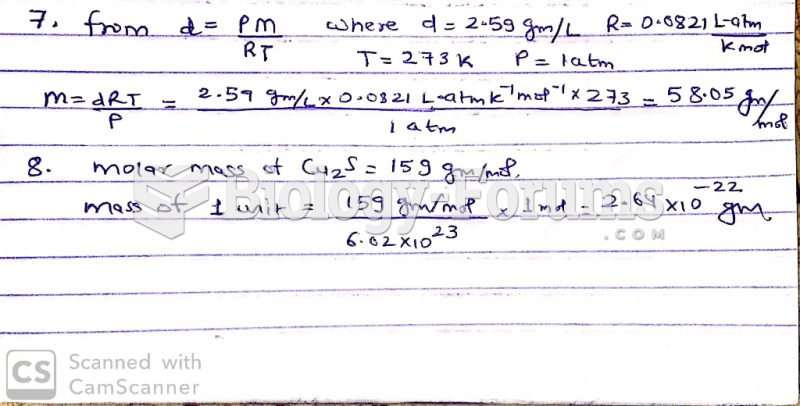|
|
|
Complications of influenza include: bacterial pneumonia, ear and sinus infections, dehydration, and worsening of chronic conditions such as asthma, congestive heart failure, or diabetes.
Fewer than 10% of babies are born on their exact due dates, 50% are born within 1 week of the due date, and 90% are born within 2 weeks of the date.
The first documented use of surgical anesthesia in the United States was in Connecticut in 1844.
Only 12 hours after an egg cell is fertilized by a sperm cell, the egg cell starts to divide. As it continues to divide, it moves along the fallopian tube toward the uterus at about 1 inch per day.
The shortest mature adult human of whom there is independent evidence was Gul Mohammed in India. In 1990, he was measured in New Delhi and stood 22.5 inches tall.
 Much of the dark space between stars, as seen in the sky of the image above, is due to the human eye
Much of the dark space between stars, as seen in the sky of the image above, is due to the human eye
 Taking off is one of the main times albatrosses use flapping to fly, and is the most energetically d
Taking off is one of the main times albatrosses use flapping to fly, and is the most energetically d





